The "Journal of Higher Education Athletics & Innovation" is now the "Journal of Higher Education, Athletics, Labor & Innovation." Learn more About the Journal or visit the Archives to access the journals' publications.
Submission Guidelines
Instructions for Authors: Original Submission
Instructions for Authors: Revised Submission
ORCiD for Accepted Manuscripts
Instructions for Authors: Original Submission
The Journal of Higher Education, Athletics, Labor & Innovation (JHEALI) publishes scholarly empirical, theoretical/conceptual, exploratory, and perspective-based articles that evaluate how higher education and innovative thinking intersect to advance sport theory and practice. Manuscripts suitable for publication in the journal cover areas such as higher education policy reform, college athlete identity formation, mental health, business model conceptualization, academic support service efficacy, etc.
Categories for manuscripts:
- Autoethnography
- Book review
- Empirical peer-reviewed research article
- Practitioner’s perspective
- Professor’s perspective
- Research note
- Student perspective
Before you read the JHEALI format guidelines, browse through our Author Resource Center for writing tips, such as how to distinguish between active and passive voice, when to use first person point of view, power verbs, etc.
After you read the guidelines, you have the option to download our Author Submission Guidelines Checklist to monitor your progress.
The following formatting guide will provide instructions on how to format your article according to American Psychological Association (APA 7th edition) standards and JHEALI policies prior to submitting it. Thanks for considering our journal for publication. We look forward to seeing your manuscript soon.
JHEALI Format Guidelines
First Page/Title Page
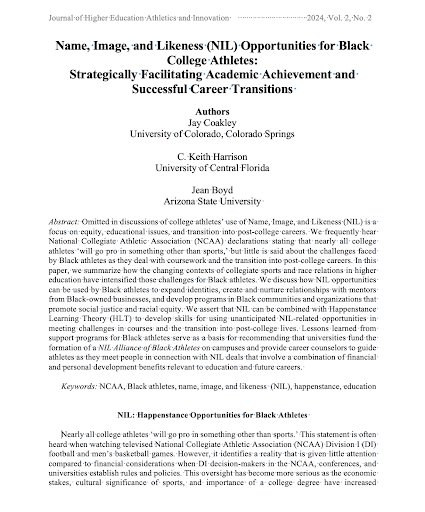
The title should not be on a separate page.
Alignment: Centered
Size:18
Font: Times New Roman (Bold)
Running Header
Include the journal’s full name on the left-aligned side and the current year on the right-aligned side. The Copy Editor will populate the volume and issue number upon acceptance.
Page Numbers and Limits
Include page numbers on every page, except the title page, in the bottom right corner. There is a page limit of 51.
Author’s Name
For the initial review process, please type “AUTHOR NAME” in place of your name(s) to adhere to a double anonymous review. After the manuscript is accepted, you will list your name(s) when working with the Copy Editor.
Write “AUTHOR NAME” for as many authors as appropriate, two lines below the title. If there are multiple authors, there should be one single line between authors.
Alignment: Centered
Size:14
Font: Times New Roman
Author’s Affiliation
To ensure anonymity, write “AFFILIATION” on the line below the author’s name and follow the same stylings as the Author’s name. After the manuscript is accepted, you will then list your desired affiliation.
Alignment: Centered
Size:14
Font: Times New Roman
Abstract & Keywords
Abstracts
Do not indent this section. Write “Abstract:” in italics followed by a colon. Then, insert your abstract text in normal (not italicized) font immediately after the author’s affiliations. You should not give this section a Title heading in the styles pane.
APA abstracts have a word limit of 150-250 words.
Avoid citing sources in your Abstract unless your research responds directly to another study or focuses on the work of a single theorist. In general, though, don’t include citations unless absolutely necessary.
Resource:
See more in the APA 7th ed. Manual section 3.3 as well as the following guide on citing sources in Abstracts: Can you cite sources in an abstract?
Keywords
Authors should include 5-7 keywords spaced two lines under the Abstract. The word “Keywords:” should be italicized, indented, and followed by a colon with five to seven words written in regular font separated by commas.
Keywords make your article searchable on library and scholarly databases. Think about what phrases you would type to bring up your article on Google Scholar. Consider the names of major theories, fields, methods, and topics used throughout the manuscript to decide your keywords.
Alignment: Left, first-line indent
Size:12
Font: Times New Roman
Resource:
Abstract and Keywords guide: Abstract and Keywords Guide, APA Style 7th Edition
Main (Body) Text
The main text should immediately follow the Abstract and not start on a new page. There should be a line between the Abstract and the main text.
Insert one line of blank space after each paragraph and each section header. Sentences should be separated by one space, not two.
Alignment: Justified, first-line indent
Size:12
Font: Times New Roman
Resource:
Tip on how to view the number of spaces between words in Microsoft Word: select the “Spaces” box under viewing preferences. Show or hide tab marks in Word - Microsoft Support
Footnotes
APA does not recommend the use of footnotes and endnotes because they are often expensive for publishers to reproduce. However, if explanatory notes still prove necessary to your document, APA details the use of two types of footnotes: content and copyright.
Resource:
Footnotes and endnotes: Footnotes and Endnotes - Purdue OWL
Block Quotes
Block quotes are reserved for quotes 40 words or longer.
Start a block quotation on a new line and indent the whole block 0.5 inches from the left margin. Once the quotation is finished, the rest of the text should follow standard main text formatting.
Resource:
Quotations: APA Quotations
Seriation
APA allows for seriation in the body text to help authors organize and present key ideas. There are two types of seriated lists: numerical and alphabetical.
For lists where a specific order or numbered procedure is necessary, use an Arabic numeral in parentheses. For example, when describing the steps of a research study: (1) participants signed consent forms, (2) researchers recorded their answers, and (3) participants collected their $20 gift card after completing the study.
If items listed do not require a specific order, use lowercase alphabet letters in parentheses. For example, when listing the five tenets of Critical Race Theory: (a) permanence of racism, (b) Whiteness as property, (c) interest convergence, (d) colorblindness/critique of liberalism, and (e) counterstorytelling.
Use Italics for Emphasis, Not Quotation Marks
When emphasizing or defining a term for the first time, use italics for emphasis rather than single or double quotation marks.
Example: Mindfulness is defined as “the act of noticing new things, a process that promotes flexible responding to the demands of the environment” (Pagnini et al., 2016, p. 91).
Resource:
Use of italics: Use of italics
Headings
For accessibility standards, each section of any paper needs a Level 1 Heading (i.e., Introductory section, Literature Review, Methods, Results/Findings, Discussion, Conclusion). Headings make your article more accessible for people with screen readers, people with cognitive disabilities, and others who rely on in-page navigation.
Consider using some of the Keywords listed under your Abstract for heading titles (especially within the introductory pages) to guide the reader’s comprehension of your topic.
A note on the Introduction section: The heading “Introduction” should not be written, as it is inferred, according to APA. Instead, authors may use creative license to draw the reader’s attention, e.g., The Path to Leadership in the National Football League.
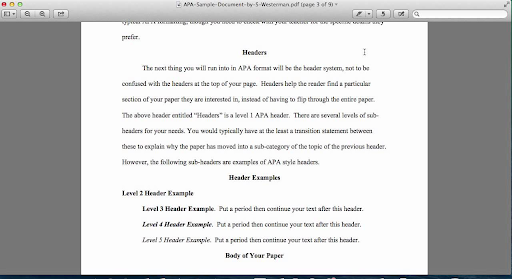
Resource:
Heading levels: Heading Levels Template: APA Style 7th Edition
See more on web accessibility standards:World Wide Web Consortium (W3C) headings structure
Tables & Figures
Embed tables and futures within the text unless they belong in an appendix section. Tables and Figures must be referenced in the body of the text.
Table setup:
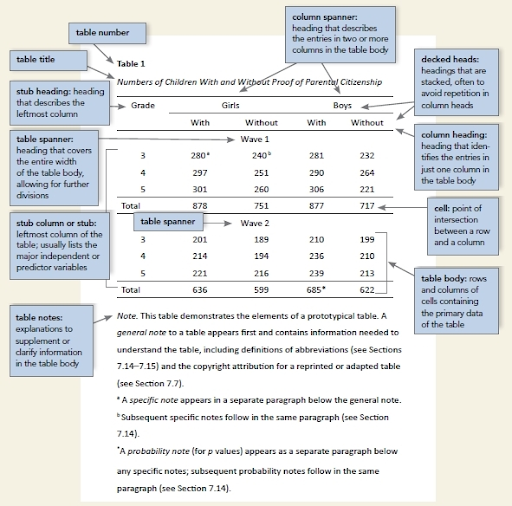
Figures setup
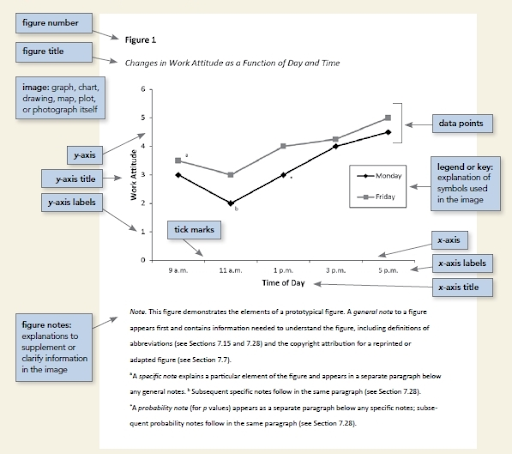
Resource:
Tables and figures: Tables and figures setup and guides
References
In-text Citations
References should be alphabetized within the text body. For three or more authors, list the first author’s name followed by “et al.”
For example: one author (Luna, 2020), two authors (Salas & D’Agostino, 2020), and three authors (Martin et al., 2020).
Reference List
In the Reference List at the end of the body text, begin on a new page. References should be alphabetized and double-spaced between entries. For further guidance on APA citations on citing articles with 1-7 authors and on citing articles with more than 7 authors, you may refer to this formatting style and guide.
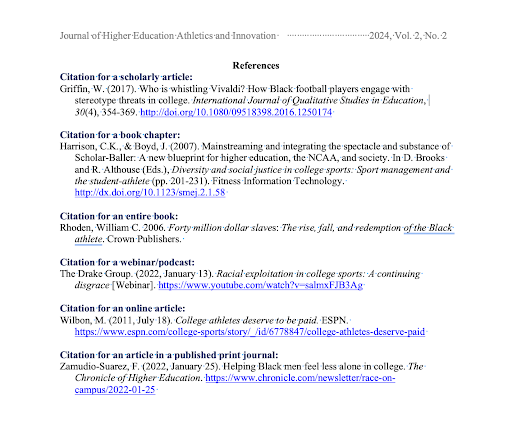
Alignment: Left, Hanging indent
Size:12
Font: Times New Roman
Resource:
APA Author-date citation system: APA 7th ed. Author–date citation system
References guidelines and examples:
Copyright Permission Notes
If you quote more than 500 words of published material or think you may be in violation of “Fair Use” copyright laws, you must get the formal permission of the author(s). All other sources simply appear in the reference list.
Follow the same formatting rules as with content notes for noting copyright permissions. Then attach a copy of the permission letter to the document.
If you are reproducing a graphic, picture, chart, or table from some other source, you must provide a special note at the bottom of the item that includes copyright information. You should also submit written permission along with your work. Begin the citation with “Note.”
Note. From “Title of the article,” by W. Jones and R. Smith, 2007, Journal Title, 21, p. 122. Copyright 2007 by Copyright Holder. Reprinted with permission.
JHEALI Content Guidelines
Journal Article Reporting Standards (JARS) by Section
APA Style Journal Article Reporting Standards (JARS) offer guidance on what information should be included in all manuscript sections for quantitative, qualitative, and mixed methods research and how to best discuss race, ethnicity, and culture.
Use the following resources to align each section of your manuscript with the quality indicators/reporting standards.
Resource:
JARS for quantitative research: Quantitative research design (JARS–Quant)
JARS for qualitative research: Qualitative research design (JARS–Qual)
JARS for mixed-methods research: Mixed methods research design (JARS–Mixed)
JARS for race, ethnicity, and culture: Journal Article Reporting Standards for Race, Ethnicity, and Culture (JARS–REC)
Verb Tense
Verb tense varies by section:
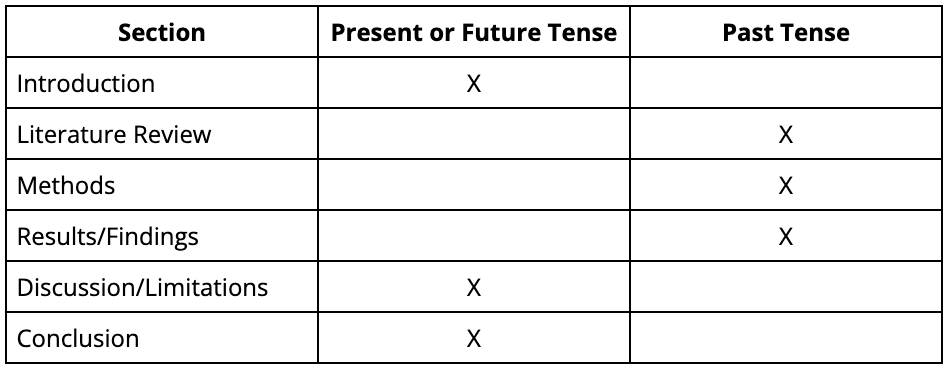
Methods
Triangulation in Qualitative Research
Triangulation in qualitative research must be explicitly written for JHEALI submission: “Demonstrate consistency with regard to the analytic processes (e.g., analysts may use demonstrations of analyses to support consistency, describe their development of a stable perspective, interrater reliability consensus) or describe responses to inconsistencies, as relevant (e.g., coders switching midway through analysis, an interruption in the analytic process.)” (APA 7th edition manual, p. 98)
Examples of supplemental checks that can strengthen the research may include
- Transcripts/data collected returned to participants for feedback
- Triangulation across multiple sources of information, findings, or investigators
- Checks on the interview thoroughness or interviewer demands
- Consensus or auditing process
- Member checks or participant feedback on findings
- Data displays/matrices
- In-depth thick description, case examples, or illustrations
- Structured methods of researcher reflexivity (e.g., sending memos, field notes, diary, logbook, journals, bracketing)
- Checks on the utility of findings in responding to the study problem (e.g., an evaluation of whether a solution worked)
P value
Authors should report all p = .000 as p < .001.
Rather than reporting *p < .08, only report p-values below .05.
Resource:
Reporting Results of Common Statistical Tests in APA Format
Discussion
The Discussion section should summarize your study results, link your findings to previous research that parallels your findings, link to previous research that counters your findings to account for alternative explanations, and discuss the implications of your results in the present and future.
The resource in this section provides a phrase guide of sentence starters in the Discussion section.
Resource:
Discussion Phrases Guide, APA Style 7th Edition
Limitations
Limitations (listed as a Level 2 heading after the Discussion section) are required for JHEALI publication. This section allows you to demonstrate how you have thought critically about your topic, understood relevant literature, and chosen the methodology most appropriate for your research. It also allows you an opportunity to suggest avenues for future research. An effective limitation section will include the following:
- A detailed account of the limitations of your study
- Detail (a) sources of potential bias, (b) possible imprecision of measures, (c) other limitations or weaknesses of the study, including any methodological or researcher limitations.
- Common Methodological Limitations
- Sample size: In quantitative research, if a sample size is too small, it is more difficult to generalize results.
- Lack of available/reliable data: In some cases, data might not be available or reliable, which will ultimately affect the overall scope of your research. Use this as an opportunity to explain areas for future study.
- Lack of prior research on your study topic: In some cases, you might find that there is very little or no similar research on your study topic, which hinders the credibility and scope of your own research. If this is the case, use this limitation as an opportunity to call for future research. However, make sure you have done a thorough search of the available literature before making this claim.
- Flaws in measurement of data: Hindsight is 20/20, and you might realize after you have completed your research that the data tool you used actually limited the scope or results of your study in some way. Again, acknowledge the weakness and use it as an opportunity to highlight areas for future study.
- Limits of self-reported data: In your research, you are assuming that any participants will be honest and forthcoming with responses or information they provide to you. Simply acknowledging this assumption as a possible limitation is important in your research.
- Common Researcher Limitations
- Access: Most research requires that you have access to people, documents, organizations, etc.. However, for various reasons, access is sometimes limited or denied altogether. If this is the case, you will want to acknowledge access as a limitation to your research.
- Time: Choosing a research focus that is narrow enough in scope to finish in a given time period is important. If such limitations of time prevent you from certain forms of research, access, or study designs, acknowledging this time restraint is important. Acknowledging such limitations is important, as they can point other researchers to areas that require future study.
- Potential Bias: All researchers have some biases, so when reading and revising your draft, pay special attention to the possibilities for bias in your own work. Such bias could be in the form you organized people, places, participants, or events. They might also exist in the method you selected or the interpretation of your results. Acknowledging such bias is an important part of the research process.
- Language Fluency: On occasion, researchers or research participants might have language fluency issues, which could potentially hinder results or how effectively you interpret results. If this is an issue in your research, make sure to acknowledge it in your limitations section.
Resource:
Limitations of research studies: Limitations of the Study - Organizing Your Social Sciences Research Paper
Instructions for Authors: Revised Submission Guidelines
If you are invited to revise and resubmit, please include a Reviewer Response Sheet with each revised resubmission and upload it as an additional submission file.
Reviewer Response Sheets should contain a simple 2-column table with “Reviewer Comments” on the left and “Author Responses” on the right.
Please accept & make alterations to the document in Track Changes for ease and efficiency of reviewer reference. Additionally, please include responses to reviewers in the resubmitted document using Track Changes.
Resource: How to ensure all files are anonymized
To ensure the integrity of anonymous peer-review, every effort should be made to prevent the identities of the authors and reviewers from being known to each other. This involves the authors, editors, and reviewers (who upload documents as part of their review) checking to see if the following steps have been taken with regard to the text and the file properties:
- The authors of the document have deleted their names from the text, with “Author” and year used in the references and footnotes instead of the authors’ name, article title, etc.
- The authors of the document have removed personal information from the file properties by taking the following steps:
- Microsoft Word for Windows
- Go to File
- Select Info
- Click on Check for Issues
- Click on Inspect Document
- In the Document Inspector dialog box, select the check boxes to choose the type of hidden content that you want inspected.
- Click Remove All
- Click Close
- Save the document
- Microsoft Word for MacOS:
- Go to Tools
- Click Protect Document
- Select Remove personal information for this file on save
- Click OK and save the file
- PDF:
- Go to File
- Select Properties
- Remove any name in the author field
- Click OK
- Save the document
ORCiD for Accepted Manuscripts
Publications are the currency of academia. While you await your copy edits, please use the next few moments as an opportunity to boost your impact in the world of scholarly communication by adding your digital identifier (ORCID) to our online portal so that we can link your authorship to our next published issue. (Benefits of an ORCID for researchers).
Why You Need an ORCID
- Ensure your work is recognized.
- Maintain all of your key information in one place.
- ORCID is free, quick, and easy to register/use
How to Add Your ORCID to the JHEALI Portal in 5 Easy Steps
Step 1: If you don’t have an ORCID, create one (it’s free): ORCID - Register
Step 2: Login to your JHEALI profile (Login | Journal of Higher Education, Athletics, Labor & Innovation).
In the top right-hand corner, click the avatar of your profile icon (look for the circle)

Step 3: Click “Edit profile” and then the “Public” tab
Step 4: Click the button that says “Create or connect your ORCID ID.” This will open a window prompt to sign in to your ORCID account
Step 5: Click “Save” on the bottom right-hand corner
